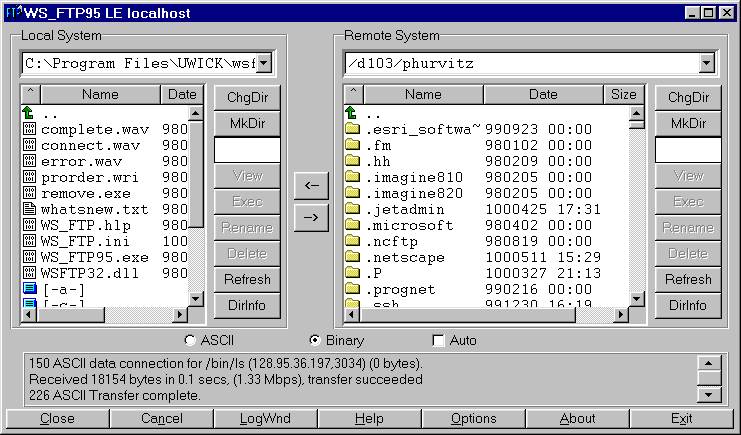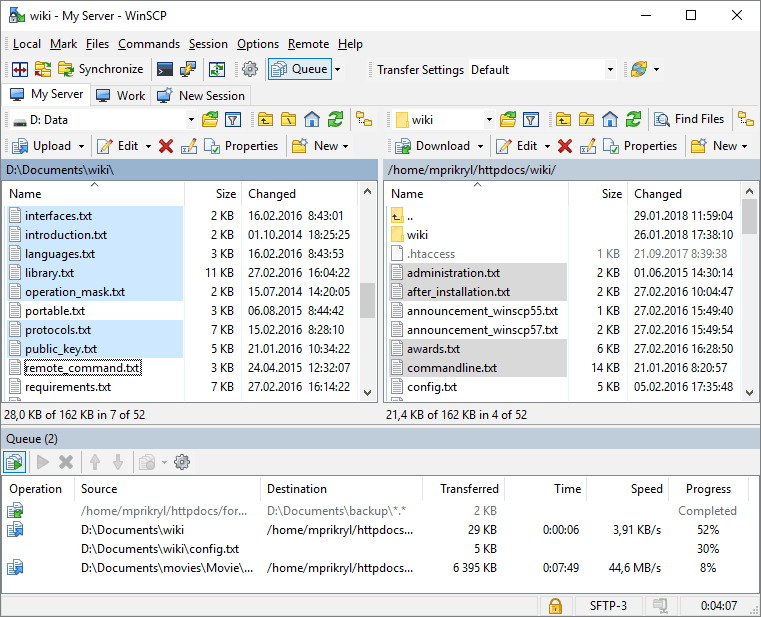
The server connection was lost by the time I checked back on the transfer status, which explains why I was unable to recover. I think my initial problems with Filezilla were caused by the upper/lower case duplicate, which caused that file to abort. Second was a soft link, which got converted to a regular file. First was two files that had identical names except for upper/lower case differences, which caused the second file to overwrite the first.
COREFTP SERVER SSH SHELL WINDOWS
I found a couple of mismatches in the Windows copy.
COREFTP SERVER SSH SHELL PC
I generated checksums of all the files on both servers and the Windows PC with the following: find. My decision to copy to Windows had an unexpected benefit - it told me of a couple subtle details of my file structure that might have gone unnoticed otherwise. The PC in the middle is Windows, but I have most Linux utilities available as part of Cygwin. I hadn't considered moving the files directly without the intermediate PC I decided that I wanted to keep it as part of the process, mostly to provide backup for the files. For clarification, here are more details of the problem and my final results.īoth remote servers are *nix systems with SSH and shell access. I tried FileZilla, but it failed partway through the transfer from the old server and couldn't recover without losing track of what was already finished. Just make sure you don't give anyone access to your private key.I have about 600MB on a remote web server that I'd like to copy to a PC, then copy to a new server.
COREFTP SERVER SSH SHELL DOWNLOAD
to upload files, or use Operation > Download (or the downward arrow) to download files to your computer. The means that you have the SSH sliding window riding on top of the TCP sliding window. The most common implementation basically reimplements sliding windows. This means that SSHv2 has to implement its own flow control algorithm.
 For accessing a windows machine, you can use: ssh -t
For accessing a windows machine, you can use: ssh -t The -t flag forces a pseudo-tty allocation, and the -l flag spawns a login shell.

Keep control: There are some situations where you want to give somebody only partial access to your computer account. If you can't change your default shell, ssh -t userhost 'zsh -l' works.Once connected, as long as your internet connection is reliable, everything will go fine.

Efficient: The SSH protocol is very efficient, and you will not suffer from unstable packet transmission or data losses.You will log into an account with your username on the remote computer, authenticate to the host computer's SSH server using an encrypted connection, and everything you do will be encrypted. Secure: The SSH protocol has been designed to provide a secure way to connect to servers remotely, execute commands, and perform operations in an untrusted network.What are the key features of SSH Secure Shell Client? SSH applications use the client-server model where an SSH client instance connects to an SSH server, using private and public key pairs to authenticate interactions. SSH Secure Shell Client is the client version of the Secure Shell Protocol (SSH), a cryptographic network protocol that allows network services to operate securely over an unsecured network.


 0 kommentar(er)
0 kommentar(er)
